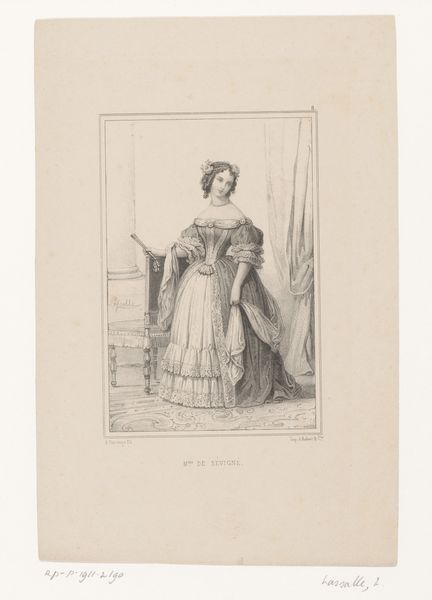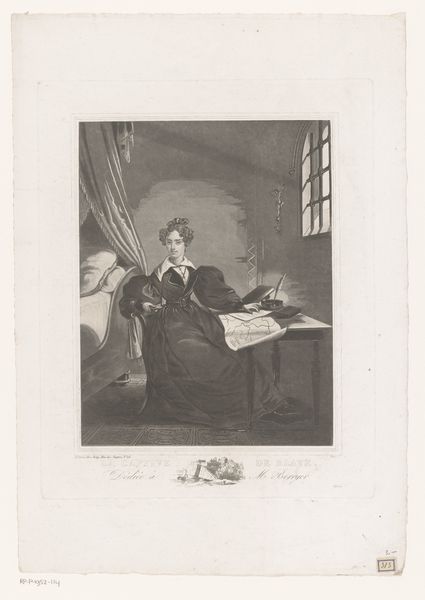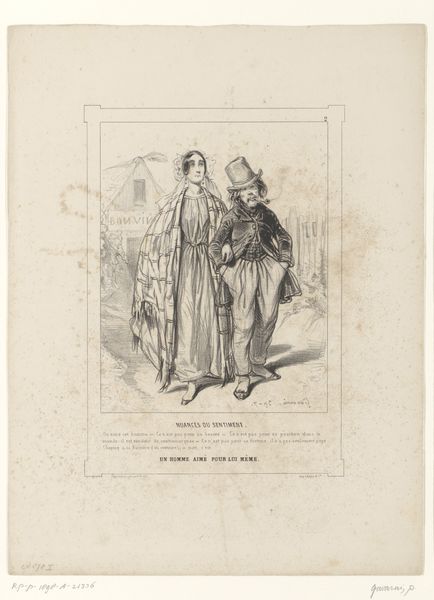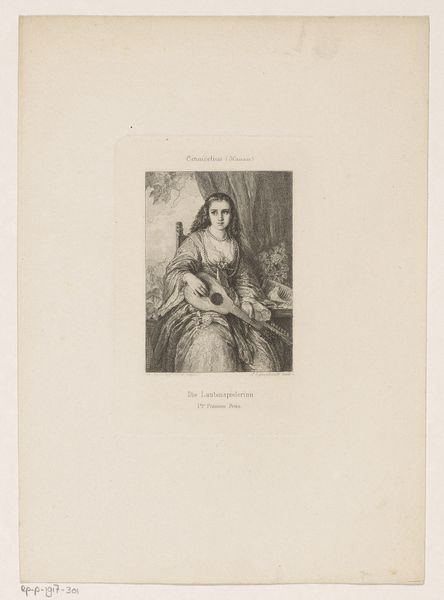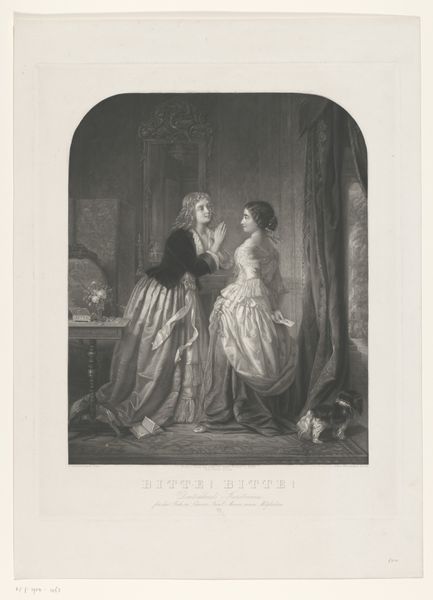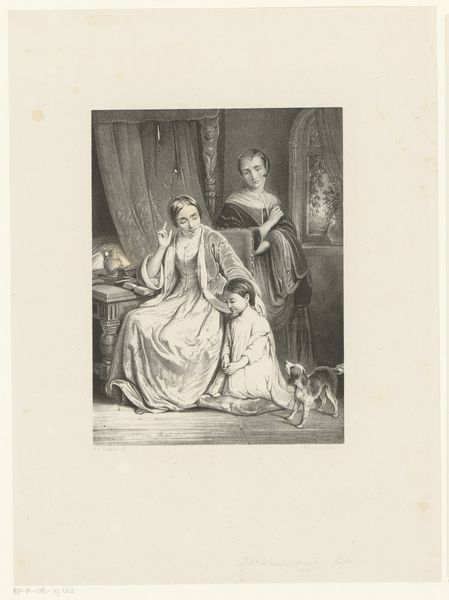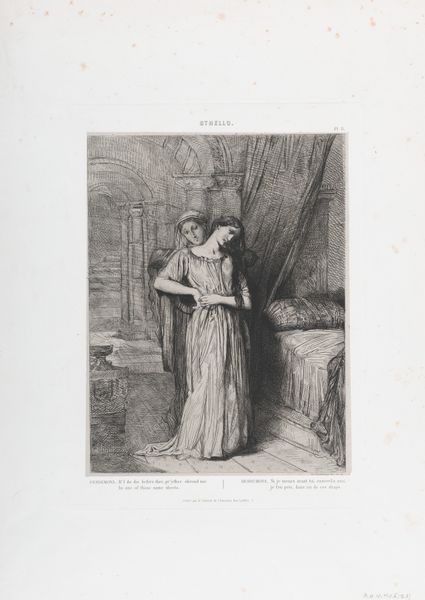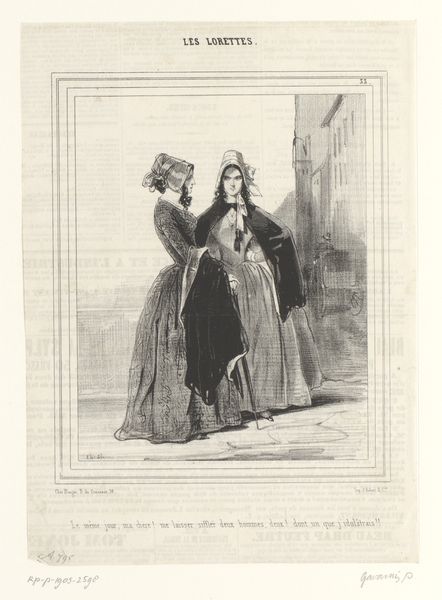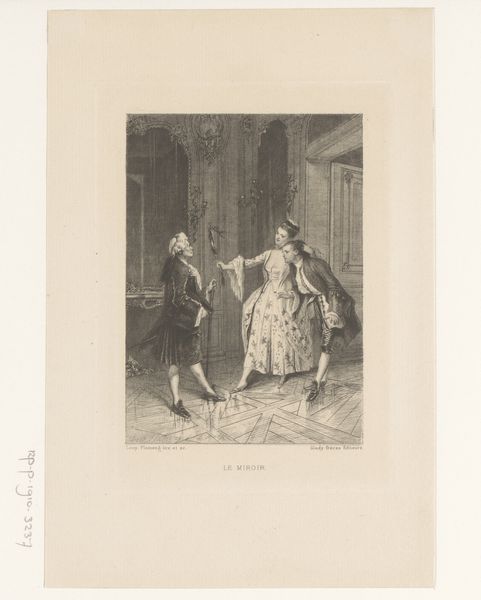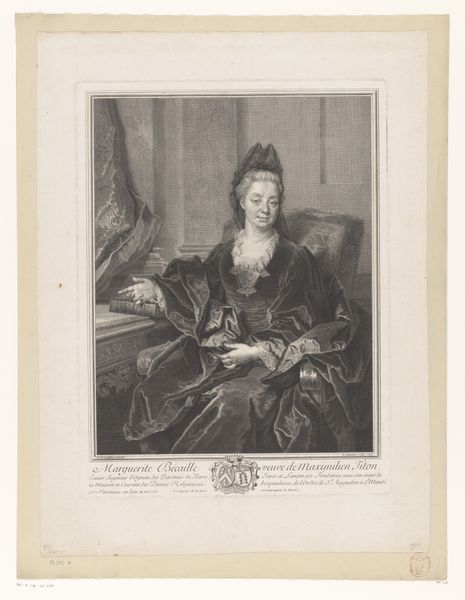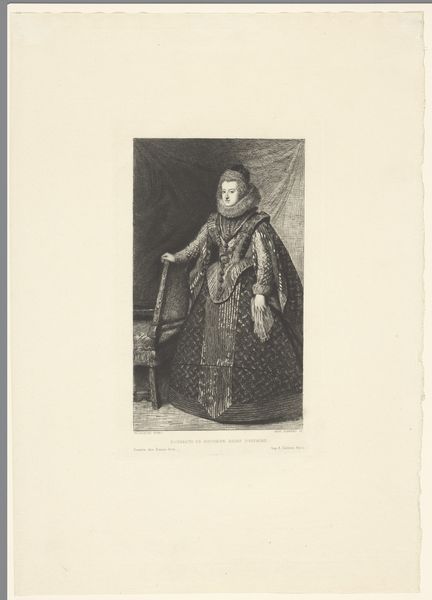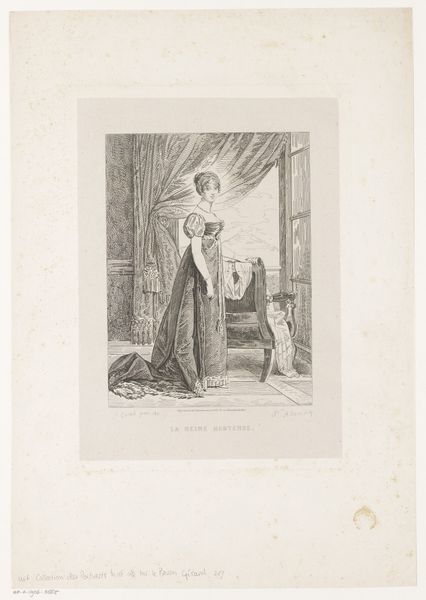
print, engraving
#
portrait
# print
#
history-painting
#
academic-art
#
engraving
#
realism
Dimensions: height 270 mm, width 162 mm
Copyright: Rijks Museum: Open Domain
Curator: Looking at this print, I'm immediately struck by the weight of it. A dark, almost oppressive mood hangs in the air. Editor: And a striking figure dominates! This is "Portrait of Maria de' Medici," an engraving by Henri Felix Vion, likely completed between 1873 and 1894. Vion was known for his realistic prints. It really captures something of the grandeur associated with powerful figures. Curator: Grandeur perhaps, but also constraint. The severe gaze, the stiff collar... It all speaks of the pressures placed upon women in positions of authority. She appears boxed in. Editor: Absolutely! Those ruffs were fashionable cages, weren’t they? Visually impressive, of course, signifying wealth and status but so…limiting! This portrayal is also an interesting commentary on the public perception of historical figures; they become frozen in time. It evokes an era of strict formality. Curator: It does seem caught in time, especially given Vion worked so long after Medici's reign. One of the functions of academic art was to distill key historical lessons from the past for consumption by later generations, especially moral lessons in leadership. Consider how prints facilitated the dissemination of particular readings of history among larger publics than ever before. Editor: True, it's more than just a portrait. Vion doesn't just reproduce an image; he recreates an atmosphere and narrative for a nineteenth-century audience, shaping our understanding of Maria de’ Medici across time. Curator: But this image raises so many questions. Why did Vion, working in the late 19th century, choose to represent Marie de Medici? What did she signify during the height of French imperialism? Editor: For me, what lingers is the texture, rendered beautifully in engraving, and the paradox of such tangible materiality representing an idea of power that is distant, mediated. What you bring up highlights how relevant art like this becomes to those considering the legacies of European cultural projects.
Comments
No comments
Be the first to comment and join the conversation on the ultimate creative platform.
